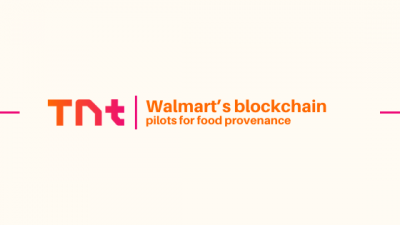
One of the critical aspects of effective and efficient treasury management is to optimize and reduce banking fees and associated costs. Read this blog to know how automated treasury management software helps achieve the same while improving financial performance.
Managing banking fees effectively is one of the most important aspects of maintaining financial efficiency and profitability. With complex financial workflows, difficult integration with ERPs, the ever-increasing volume of bank data to deal with, and rising transaction costs, it’s time businesses opt for automated treasury management solutions to streamline operations and reduce unnecessary fees.
An automated treasury management software improves visibility over cash positions, minimizes borrowing costs, and increases returns by driving better investment and borrowing decisions. Moreover, it helps achieve financial stability in a dynamic business environment by aggregating data from various sources, like banks’ ERPs and investment portfolios, giving an overview of a company’s cash position.
In this blog, we will explore six ways how businesses can reduce their banking fees using automated treasury management software.
● Get Daily Cash Visibility
The daily cash visibility feature in treasury management plays a crucial role in reducing banking fees by providing comprehensive, real-time insights into cash positions across all accounts. By giving treasury teams a centralized view of bank balances — broken down by account, bank, region, or currency, businesses can proactively manage their cash flow. With this visibility, treasury teams can quickly identify accounts with low balances and take immediate action to fund them, avoiding costly overdraft fees or insufficient funds penalties.
Moreover, the ability to analyze expected cash flows and automate cash sweeps ensures that funds are always optimized across accounts. This minimizes the need for last-minute, high-cost transactions, such as urgent fund transfers, which often incur higher fees.
● Bank And Cash Reconciliation
Features like bank reconciliation in automated treasury management significantly reduces bank fees by automating the manual and time-consuming process of reconciling expected cash transactions with bank statements. With the ability to create user-defined reconciliation rules, businesses can easily match planned transactions with actual bank transactions, ensuring greater accuracy and efficiency. It also eliminates the risk of errors or delays that could lead to costly penalties, such as overdraft fees or missed payments.
Additionally, by automating the reconciliation process, businesses can quickly identify unmatched transactions. For example, outstanding checks or missing payments — and take appropriate actions, such as adjusting entries or moving transactions to a future date. This proactive approach prevents unnecessary fees associated with failed transactions or discrepancies in cash flow management.
● Multi-Rail Payment Processing
An advanced treasury management system streamlines payment operations by offering multiple payment methods within a single platform, helping businesses reduce costs and improve efficiency. With multi-rail optionality, treasury teams can choose from Instant, ACH, Same Day ACH, Domestic Wire, and International Wire, allowing them to optimize speed and cost for each transaction. This flexibility ensures that payments are processed efficiently, minimizing the risk of high fees typically associated with traditional methods. Instant Payments enhance liquidity by settling funds in seconds, while ACH and Same Day ACH provide cost-effective alternatives for domestic transfers.
For international transactions, businesses can avoid costly SWIFT fees by leveraging local payment rails, enabling cross-border payments at a fraction of the traditional costs. Additionally, FX rate lock-ins ensure businesses receive competitive exchange rates, avoiding expensive hedged rates. Intercompany transfers across different currencies and entities are simplified, reducing both the complexities and costs of global payments. Overall, these payment solutions help businesses save on banking fees while improving cash flow and operational efficiency through faster, more cost-effective payment methods.
● Allowing Multi-Channel Payments
A multi-channel payment portal enables treasury departments to optimize both payment speed and cost while ensuring enhanced security and operational efficiency. By allowing payment settlement through various channels, such as direct bank connectivity, SWIFT, or APIs—businesses can choose the most suitable method for each payment based on specific requirements. If a technical issue arises with one channel, the system can seamlessly switch to another, ensuring continuity and minimizing delays. This flexibility also speeds up the checks and approval process, allowing payments to be processed faster and using the most cost-effective methods.
In addition, for high-volume payments, direct bank payments (Host-to-Host via SFTP) provide a secure and cost-efficient solution, especially when connecting to a company’s primary bank. SWIFT service payments enable businesses to connect with multiple banks via a single service bureau, such as FIDES, reducing the need for individual bank setups and lowering integration costs. For real-time, secure transactions, API payments offer instant payment initiation, execution, and status tracking, with built-in fraud detection for added security. This multi-channel flexibility ensures that businesses can balance cost, speed, and security while improving operational efficiency across diverse banking relationships.
● Bank Connectivity Manager
The bank integration capabilities in treasury management streamline financial operations by enabling automatic import of bank statements from major banks like BofA, Citi, PNC, Wells Fargo, and HSBC. There are two types of integrations: host to host via SFTP (file-based) for direct bank connectivity, and SWIFT connections through partners like FIDES. These integrations save time and reduce errors by automating data transfer from banks into the system.
Once bank statements are integrated, the bank statement parser automatically processes industry-standard file formats (BAI2, MT940) and provides real-time visibility into which bank statements have been received and processed. The bank transaction classifier then identifies and classifies transactions as inflows or outflows, further categorizing them into specific types like AR, AP, payroll, or tax. This automated classification streamlines cash management and ensures accurate mapping of transactions to regions and entities. For banks without direct integration, the manual file upload option allows users to upload bank statements for low-volume accounts, ensuring all transactions are captured and processed efficiently. This combination of automated and manual solutions enhances operational efficiency, reduces errors, and provides comprehensive insights into cash flow.
● Bank Account Management
The bank account management feature simplifies the process of managing bank accounts by allowing users to initiate requests for opening, changing, or closing accounts, with approval workflows and automated letter generation for easy communication with the bank. For example, users can start the process to open a new account at BofA, completing all necessary documentation and initiating internal approval steps.
The signatory management feature provides an efficient way to track and manage signatories for all bank accounts. Users can easily import, update, or terminate signatories in bulk, ensuring compliance with authority limits and maintaining an audit trail for reporting purposes. For instance, a UK controller may have signing authority for up to $1M on a Citi account, while the global CFO can approve higher amounts, with changes tracked and reported in real-time.
Choose the Right Automated Treasury Management Software
Legacy treasury management systems are often costly, difficult to adopt, and prone to integration issues, leading to manual data entry, errors, and inaccurate forecasts. These systems lack automation, making it hard to scale and manage cash flow efficiently, while also creating dependency on vendors and high maintenance costs.
An automated treasury management not only reduces bank fees but also solves these problems by offering seamless integration with ERPs, banks, and financial platforms, enabling real-time data aggregation and reducing errors. With features like automated cash forecasting, bank reconciliation, and signatory management, businesses can streamline operations, improve cash visibility, and ensure compliance, all while easily scaling and adapting to changing needs without the cost and complexity of legacy systems.
Information contained on this page is provided by an independent third-party content provider. Binary News Network and this Site make no warranties or representations in connection therewith. If you are affiliated with this page and would like it removed please contact [email protected]



Comments